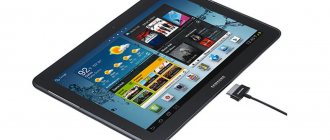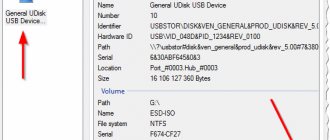Exposure modes and metering
Like any semi-professional camera, the Pro815 has a standard set of exposure modes: program (P), aperture (A) and shutter priority (S), as well as a fully manual (M) mode.
In any of these modes, it is possible to quickly save all shooting parameters into one of three user profiles. Subsequently, you can easily return to the saved combination of settings by switching to the “MySET” user mode using the selector and selecting the desired profile through the menu. For beginners who do not want to delve into all the intricacies of the photographic process, they are offered a fully automatic mode, in which changing most shooting parameters is impossible, as well as a set of 11 scene programs (“night”, “portrait”, “children”, “landscape”, “ macro", "text", "sunset", "dawn", "backlight", "fireworks", "beach/snow").
The camera has three metering modes: spot, multi-spot and center-weighted. In spot mode, metering is tied to either the center point of the frame or the focus point. Multi-spot metering is carried out over the entire area of the frame, and center-weighted metering is carried out mainly over the central area of the image. As with other important settings, there is a separate button located on the top plane of the body to switch between exposure metering modes.
One cannot fail to note the rather original control of exposure compensation - using the third ring on the lens. By holding down the AE-L button and rotating this ring, you can make the necessary adjustments extremely quickly, with changes very clearly displayed both on the LCD and viewfinder, as well as on the sub-display. For a more accurate assessment of the illumination of a frame, it is possible to display a histogram of brightness distribution on the display or viewfinder.
Exposure blocking and bracketing are also provided.
Buy Samsung Galaxy S20+ 5G 12/128GB (Snapdragon 865) white
Large Dynamic AMOLED display, powerful processor, excellent cameras and good battery life.
In February 2020, in New York, the South Korean company Samsung held a presentation of the folding smartphone Galaxy Z Flip and three devices of the new Galaxy S20 line: Samsung Galaxy S20, Samsung Galaxy S20+ and Samsung Galaxy S20 Ultra. It’s a little surprising that the Galaxy S line added ten digits and immediately jumped from S10 to S20, although up to this point the numbering was in order. We have already talked about the Samsung Galaxy S20 and Samsung Galaxy S20 Ultra in previous reviews, and today we will talk about the Samsung Galaxy S20+.
We can tentatively say that the Samsung Galaxy S20+, like its brothers, not only represents a new generation of flagship models, but also shows the amazing capabilities of completely updated rear cameras. During our review, we will talk about all the advantages and disadvantages of the Samsung Galaxy S20+ and decide whether it is worth buying.
Equipment and appearance
Before discussing the smartphone itself, let's first find out what is included in the factory package. The Samsung Galaxy S20+ is sold in a black cardboard box and inside, in addition to the smartphone itself, there is a 25-watt charger with support for fast charging, a USB Type-C charging cable, a tool for removing the SIM card tray, wired stereo headphones and a warranty card with instructions. Unfortunately, they did not include a protective cover.
Attention!!! The equipment may vary depending on the delivery; be sure to check this question with the contact center operators when purchasing .
Samsung Galaxy S20+ presented in black, gray and blue. The device has an aluminum side frame, and the back and front panels of the smartphone are covered with tempered glass Corning Gorilla Glass 6. Of course, fingerprints are very noticeable on the glass, but thanks to the oleophobic coating they are easily removed. The dimensions of the device are 73.7 × 161.9 × 7.8 mm, and it weighs 186 g.
Everything is perfect with the quality of materials and workmanship, otherwise the device would not have received protection from water and dust according to the IP68 standard. This protection ensures the safety of the smartphone when immersed in water. The ergonomics are also all right, the smartphone lies comfortably in the hand and there is no desire to let it go, this is facilitated by the thin body of the device.
The smartphone has very thin frames and therefore almost the entire front side is occupied by the display (93.7%). At the top of the screen, in the center, there is a small round cutout in which the front camera lens is located. A little higher, at the junction of the top end and the front panel, is the earpiece.
Control buttons with an ultrasonic fingerprint scanner are integrated into the display. The scanner works without failures and its response speed is quite high.
In the upper left corner of the rear panel there is a rectangular block that combines four cameras, an additional microphone and a flash. The block protrudes slightly beyond the body, but this problem is solved with the help of a cover. The manufacturer's logo is located at the bottom of the rear panel.
There are no control elements on the left side face.
On the opposite side there are paired volume keys and a lock button.
The main microphone, USB Type-C connector and multimedia speaker are located at the bottom.
At the top end we will find another microphone and a slot for SIM cards and memory cards.
Screen and sound
Samsung Galaxy S20+ is equipped with a 6.7-inch display with an aspect ratio of 20:9 and a resolution of 3200×1440 pixels (WQHD+). The display is called Infinity-O, made using Dynamic AMOLED technology and HDR10+ certified. The pixel density is quite high - 524 ppi. I would like to note the refresh rate of 120 Hz, which makes animations smoother, but only 60 Hz is available at the maximum resolution. You can try out the 120Hz refresh rate in FullHD+ resolution, which is the default.
Thanks to the large reserve of screen brightness and a comfortable level of minimum brightness, there are no problems with reading pictures under any conditions. In automatic mode, the maximum brightness level reaches up to 900 cd/m2, and with manual adjustment, the brightness level is more modest. The light sensor works adequately and there are no complaints about the operation of the automation.
We can safely say that today this display is the best in the world. This is a truly amazing sensor with wide viewing angles, deep blacks, vibrant colors and high contrast. Everything in the settings is standard, you can select one of two color profiles, apply warm or cool tones and turn on the blue light filter. The Always On Display function is also in place, where would we be without it.
The Samsung Galaxy S20+ has stereo speakers that produce loud and high-quality sound. The sound quality in wired or wireless headphones also evokes pleasant emotions. There is a slight inconvenience in the form of the absence of a 3.5 mm headphone jack, but this is quite common in modern models and it’s time to get used to it.
OS, performance and memory
Samsung Galaxy S20+ runs Android 10 operating system along with One UI 2.0 on top. In our opinion, the shell used is the most successful. It is not only convenient, but cute, functional and has wide customization options. In the Galaxy Themes application, you can find themes, wallpapers, icons and various screensavers for Always On Display made by other users. You can control it with standard gestures or using familiar buttons.
The smartphone is equipped with an 8-core Exynos 990 processor (Qualcomm Snapdragon 865 for America). The chip is manufactured using a 7-nanometer process technology and is divided into three clusters: four energy-efficient Cortex-A55 cores with a frequency of up to 2.0 GHz, two Cortex-A76 cores with a maximum frequency of 2.5 GHz and two high-performance Exynos M5 cores with a frequency of 2.7 GHz. The Mali-G77 MP11 graphics processor is responsible for graphics processing.
In real life, the Samsung Galaxy S20+ performed well. The performance of the platform used is sufficient to work with any applications and games, and there is a reserve for several years in advance. Synthetic tests show more impressive results than last year's flagships. Under heavy loads, the case heats up, but it is not critical and there is no need to worry about it.
For Russia, the Samsung Galaxy S20+ comes with 8 GB of RAM and 128 GB of internal memory on board. There is also a reason for frustration; for other countries, devices with a more impressive amount of memory are produced, but for the average user this volume is quite enough. If something happens, you can use a memory card, but then you will have to use only one SIM card.
Cameras
The time has come to talk about cameras, about which there is so much noise. Samsung Galaxy S20+ is equipped with four rear cameras. The main 12-megapixel camera received optics with an f/1.8 aperture, advanced Super Speed Dual Pixel autofocus and an optical image stabilizer.
The ultra-wide-angle camera with a viewing angle of 120 degrees also has a resolution of 12 megapixels, but it has an f/2.2 aperture and electronic stabilization. The 64 MP telephoto module is equipped with an f/2.2 lens and is responsible for 3x hybrid zoom. The DepthVision camera, together with an infrared sensor, measures the distance to objects.
The main camera takes excellent pictures and even in poor lighting conditions you can take photographs even without night mode. The ultra-wide-angle camera shows good results during the day, but the situation is worse in the evening. The telephoto camera copes with zoom without any complaints.
Video can be shot in a maximum resolution of 8K at 24 frames per second, but without stabilization. Stabilization works only in 4K and FullHD resolution. There are no complaints about the video quality, but only 12x zoom is available when shooting.
The front camera has a resolution of 10 megapixels, an f/2.0 aperture and a viewing angle of 80 degrees. The camera is equipped with autofocus, thanks to which you can shoot at very close distances. The quality of the resulting selfie is not satisfactory. In addition, the front camera can record video in 4K resolution at 60 frames per second.
Autonomy
Samsung Galaxy S20+ is equipped with a built-in 4500 mAh battery. By modern standards, this is not a weak battery and the smartphone demonstrates fairly good autonomy. It will be difficult to drain the battery in a day only if you sit on your phone all the time. The smartphone supports 25-watt fast wired charging and fast wireless charging using the Qi standard.
Bottom line
The South Korean manufacturer managed to release an excellent flagship without flaws. I would like to note the nice design, high-quality materials and assembly, IP68 protection, on-screen fingerprint scanner, stunning display, powerful hardware, stereo speakers, excellent cameras, support for fast wired and wireless charging. The only disadvantage is the high cost, but even with this price the smartphone will find its buyer.
Flash
The camera is equipped with a built-in cobra flash, which, despite its modest size, demonstrates quite impressive power: its effective range is up to 7 m in the wide-angle position of the lens and up to 3 m in maximum zoom mode (at ISO 100 sensitivity). There are the usual automatic and fill modes for such flashes, as well as a red-eye reduction mode and slow sync. If necessary, the pulse power can be adjusted within a fairly wide range (using a separate button and one of the dials).
The device has a “hot shoe” for connecting external flashes, and it supports both Samsung’s proprietary flash (model SEF-42A) and standard flashes from other manufacturers with a central sync contact.
Mobile companion
Unlike AirPods Pro, to get the full experience from Galaxy Buds Live, we recommend downloading the free Galaxy Wearable app.
It has settings for activating noise reduction, six equalizer options, a headphone software update service, and an item “reducing pressure using external noise.”
Its essence is to prevent the user from getting stuffy ears when the noise reduction is turned on. Essentially, this is similar to the transparency mode in AirPods Pro, only it works when there is no music playing in the headphones.
You cannot play with the equalizer settings; you can only select one of the preset modes. As for me, the sound changes only when selecting the “More low” mode, when the Buds Live start playing quite boldly.
Recording photos
Recording pictures is possible in JPEG, TIFF and, most importantly, in RAW format. True, for RAW and TIFF there are small restrictions: high-speed shooting, shooting with parametric bracketing, and also with a time interval between frames are not available. However, the ability for truly flexible image post-processing that RAW provides cannot be overstated.
The following resolutions are supported for JPEG frames: 3264x2448 (4:3), 3264x2176 (3:2), 3264x1840 (16:9), 2400x1800, 1632x1224, 1024x768 and 640x 480. The camera is equipped with an orientation sensor, the readings of which are recorded in the EXIF headers of JPEG files.
Photo and video camera
Anyone who wants to take photos on the Note Pro 12.2 is rather crazy, but the photos taken on this device will be of very pleasant quality.
With good lighting, we should get a very high-quality image with a lot of detail and good color rendition. It’s a little worse in difficult conditions, when it gets dark, then the amount of detail decreases sharply and is replaced by “grain”, and the whole photo becomes much less attractive.
It can also be a big problem to take photos in the form of several frames, and then take new photos without trembling in your hands. Advice: just don't do it.
Recording videos
The device has very good video recording capabilities - the maximum quality of the video stream corresponds to a resolution of 640x480 at a frequency of 25 frames/sec. At the same time, due to the design of the lens (mechanical “zoom”), it became possible to change the focal length during shooting (at an arbitrary speed), which is still a real rarity at the moment (as well as a stereo microphone, which is used in the camera to record sound accompanying video clips).
The maximum duration of a video, regardless of resolution and frequency, is limited only by the free space on the flash memory card. The only requirement is that the memory must be fast enough (recommended speed is at least 40X), otherwise the recording may be interrupted due to an internal buffer overflow.
Nutrition
Another strong point of the Pro815 is its battery. Samsung has clearly decided to endow its new product with a solid “margin of safety”: the standard lithium-ion battery has a very impressive capacity – 1900 mAh, which is almost twice as much as that of some “classmates”. Combined with the cost-effectiveness of the device, this led to excellent results - according to CIPA benchmark tests, a full battery charge lasts for approximately 500 shots. This is more than enough for even the longest photo sessions.
External interfaces
The camera is connected to a computer via a high-speed USB 2.0 interface (a standard mini-B connector is used). The logical data exchange protocol is Mass Storage Device Class, that is, for the user, a camera connected to a computer looks like a disk drive with the FAT file system. The device also supports direct printing to a printer using the PictBridge protocol.
In addition to the USB connector, the Pro815 has a low-frequency output for viewing footage on a TV screen, as well as a connector for connecting an external power supply.











